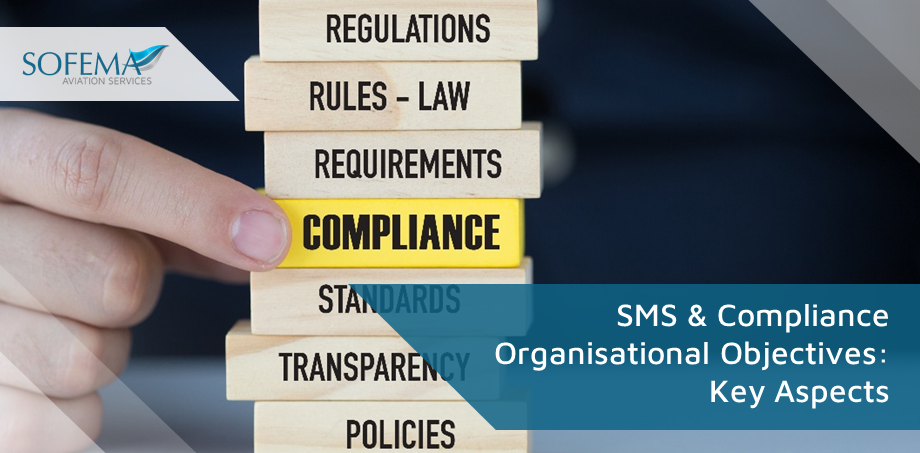Sofema Aviation Services (SAS) www.sassofia.com considers key aspects of Safety Management Systems (SMS) & Compliance Organisational Objectives
Introduction
The European Aviation Safety Agency (EASA) oversees and regulates safety standards within the European aviation industry, including Safety Management Systems (SMS). An SMS is a systematic approach to managing safety, including the necessary organizational structures, accountabilities, policies, and procedures.
Compliance Management
- Compliance management within an EASA context refers to the processes and systems that aviation organizations use to ensure they are adhering to all relevant regulations, standards, and legal requirements.
- Compliance management is fundamentally about ensuring that an organization meets established rules and standards as defined by EASA and other regulatory bodies. It is more about conforming to external requirements and is often reactive, adjusting processes and practices in response to changes in the regulatory landscape.
Safety Management
- Safety Management is a broader concept that encompasses not just compliance with regulations but also proactive measures to manage and mitigate safety risks.
Safety management is about going beyond mere compliance to actively identify and mitigate risks before they lead to incidents or accidents. It involves a continuous cycle of improvement and promotes a culture of safety throughout the organization.
From EASA’s perspective, there can be a distinction between SMS for complex and non-complex management systems. This distinction often relates to the size and complexity of the operations of the aviation service provider.
SMS-Complex Management Systems:
These are typically found in larger organizations such as major airlines. Such systems are characterized by:
- Multiple layers of management and reporting lines.
- A larger number of employees and operations.
- More complex processes and systems to manage safety risks.
- Greater regulatory oversight due to the potential impact on public safety.
- A need for more formalized and structured safety management processes.
These systems may include detailed risk management plans, emergency response plans, and continuous monitoring and assessment of safety performance.
SMS-Non Complex Management Systems:
These would apply to smaller organizations with less complex operations, such as small charter companies Characteristics include:
- Simpler organizational structures and fewer employees.
- More straightforward operational processes.
- Less regulatory requirements compared to complex systems.
- A more basic approach to managing safety, which is still systematic but less formalized.
- Focus on key safety principles that can be managed without the need for elaborate structures and processes.
For both types of systems, the core elements of an SMS typically include safety policy, safety risk management, safety assurance, and safety promotion. However, the scale and implementation of these elements can vary significantly between complex and non-complex systems.
Next Steps
Follow this link to our Library to find & download related documents for Free.
Please see www.sassofia.com and www.sofemaonline.com. For comments & questions, email us at team@sassofia.com
Tags:
Aviation SMS, Aviation Safety Standards, Incidents and Emergencies, Risks, Aviation Regulatory, Safety Management Systems (SMS), Safety Risks, European Aviation Safety Agency (EASA), SAS blogs, aviation, Emergency Response, Aircraft Accidents, Aviation Industry, Sofema Aviation Services, EASA, Compliance, aviation safety




